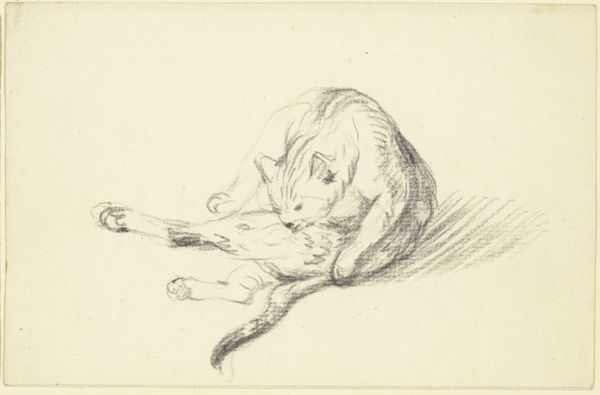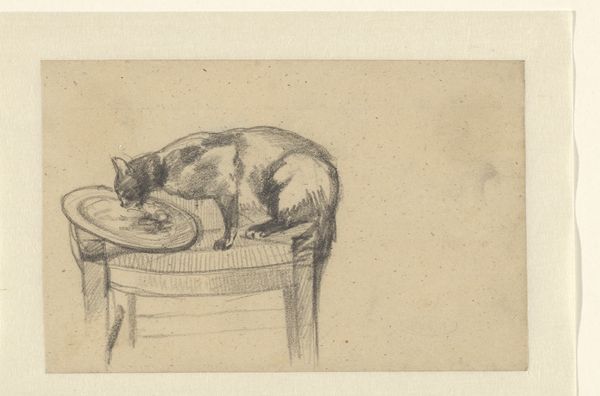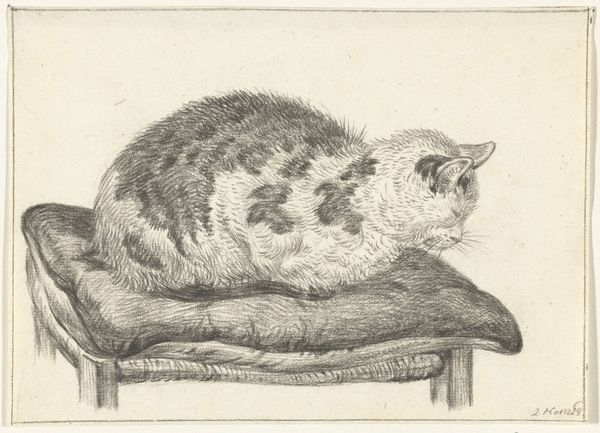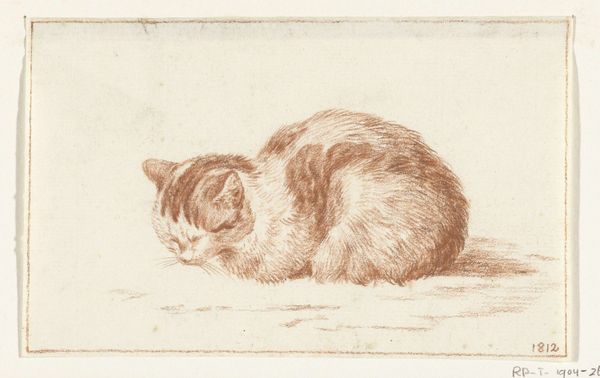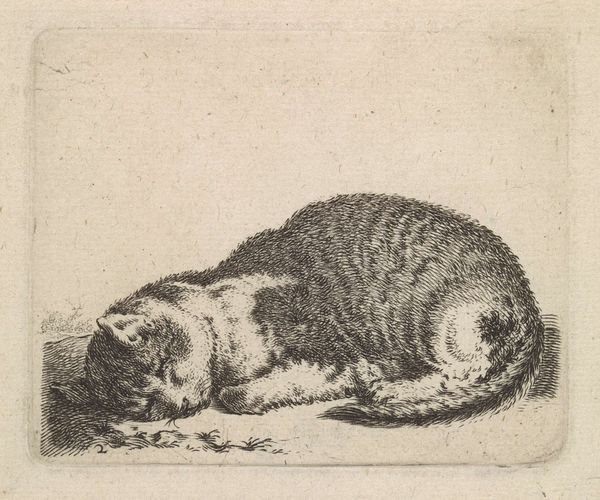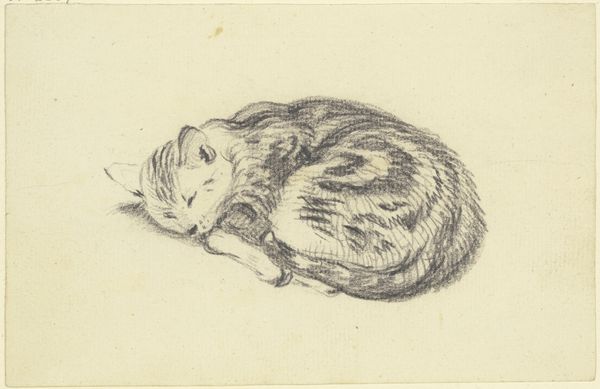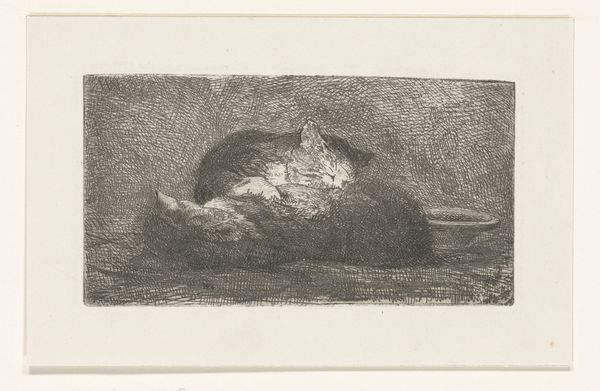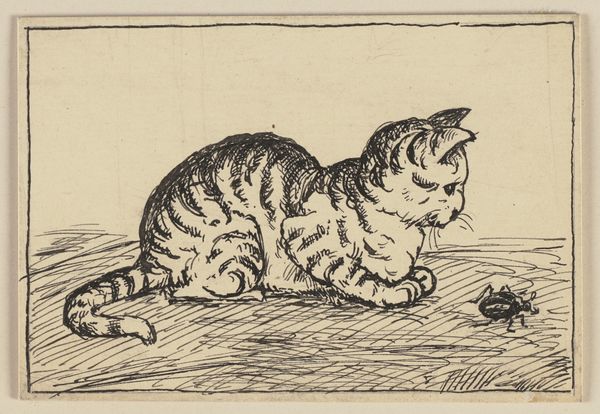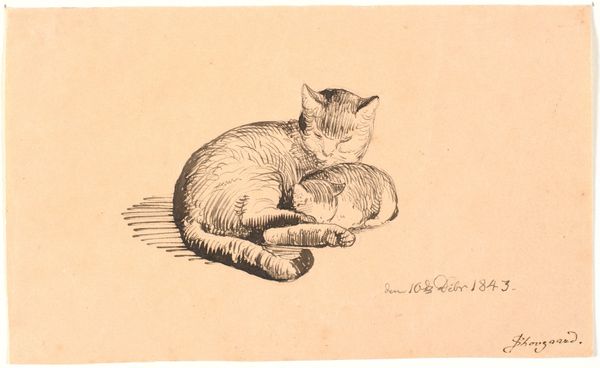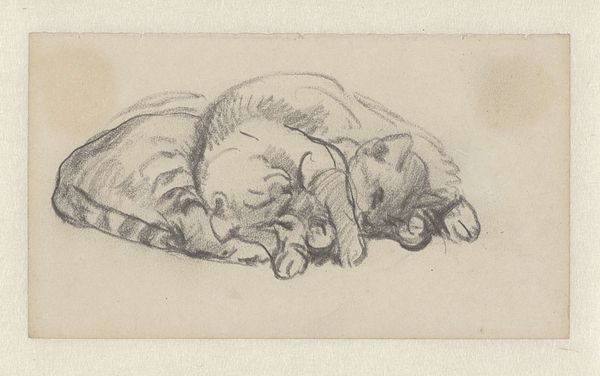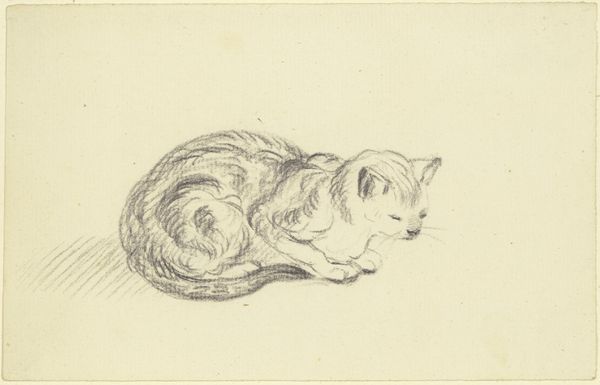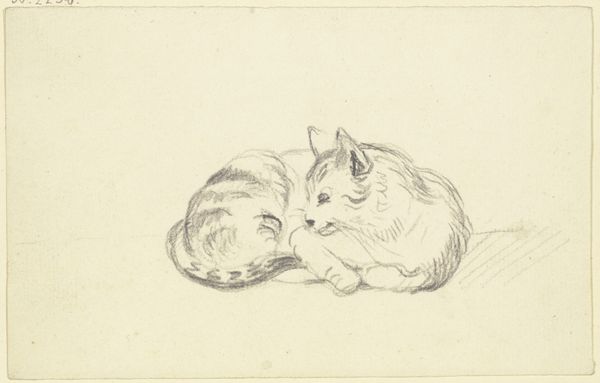
Illustration til "Halvhundrede Fabler for Børn" af Hey 1834
0:00
0:00
print, etching, engraving
#
narrative-art
# print
#
etching
#
figuration
#
romanticism
#
genre-painting
#
engraving
Dimensions: 104 mm (height) x 128 mm (width) (bladmaal)
Curator: Look closely at this delicate print: "Illustration til 'Halvhundrede Fabler for Børn' af Hey," created in 1834 by Martinus Rørbye. It’s housed here at the SMK, the Statens Museum for Kunst. Editor: It’s deceptively simple. At first glance, it's just a charming depiction of kittens, but something about their arrangement, that little tableau, strikes a deeper chord. It’s melancholic. Curator: The choice of printmaking, specifically etching and engraving, would have made it relatively accessible at the time. Consider the purpose: illustrating children's fables. These aren't high art objects meant for a wealthy patron’s collection, but practical, reproducible images for mass consumption. How do the very means of production influence our reading? Editor: You’re right. It invites closer inspection. Each kitten is caught in a different symbolic state: one sleeps peacefully on a stool—a clear visual cue representing domestic stability perhaps—while another is playing. A third drinks, engrossed and lacking self-awareness; then there’s the prowler in between. Curator: Precisely! Rørbye, primarily celebrated as a Romantic painter, cleverly used print to explore a domestic scene. He translates painting principles into graphic language. The lines feel soft despite the inherent sharpness of the etching. This attention to texture and light even in a relatively inexpensive format speaks to his commitment to his craft, irrespective of its intended audience. Editor: It’s like a miniature stage where Rørbye encapsulates multiple stages of childhood itself. Innocence, play, contentment, the journey towards… what? Self-sufficiency, I suppose, if the milk-drinker and the stalking feline are any indication. The kittens represent different parts of ourselves as we learn to fend for ourselves. It has that Romantic touch but with more intimate observation of everyday lives. Curator: Thinking about its function as an illustration, the print underscores how artists in the Romantic era expanded the reach of their work into domestic, familial spaces. These fables with their illustrations are material objects actively shaping children’s imaginations and early education. What does the increased affordability and accessibility say about artistic labour? Editor: That brings me back to its quiet sadness. Despite being part of children's fables, its symbols speak profoundly and transcend age. Seeing those different archetypes in cat form – especially knowing these images accompanied stories teaching moral lessons – reminds me we are always learning, failing, striving. Curator: Absolutely. Recontextualizing our view beyond pure aesthetics reveals a whole lot. The material existence of art deeply interacts with education, social norms, class, labor... Editor: Yes, it certainly elevates this seemingly humble etching from mere illustration to something much more resonant and deeply rooted in the fabric of daily life. I keep thinking about how these little symbolic actors play roles, each in its own world, within a singular tableau.
Comments
No comments
Be the first to comment and join the conversation on the ultimate creative platform.

